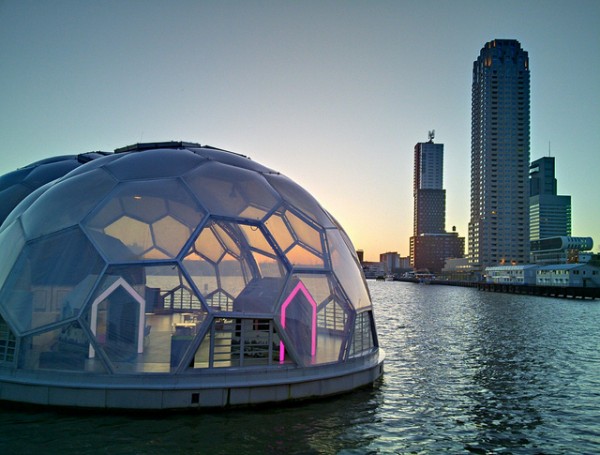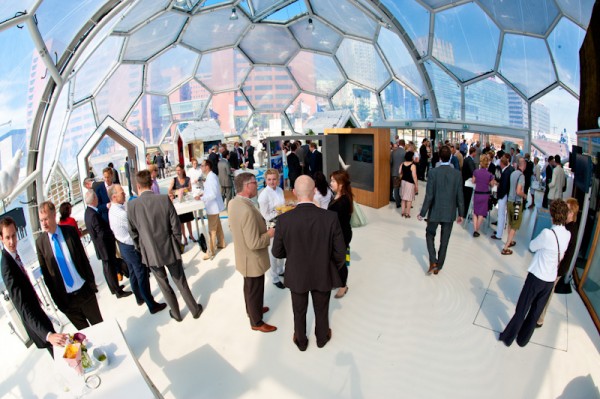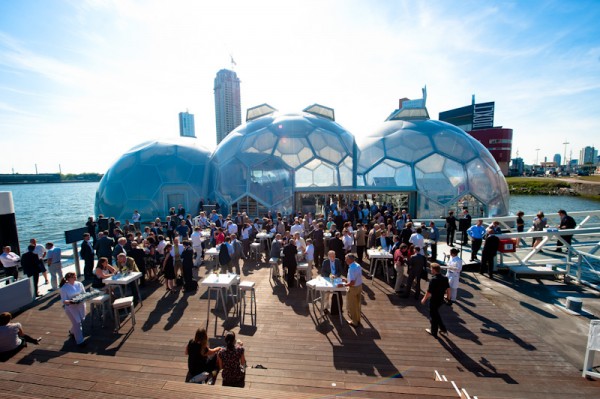Out of all the countries in Europe, The Netherlands will likely be the most vulnerable to rising sea levels as the planet continues to heat up. So it’s only fitting, then, that Dutch firms Deltasync and PublicDomain Architects would join forces to design a city platform that can rise right along with the incoming waters, should they ever breach the country’s formidable seawall system.
Looking something like the futuristic space pods from the 1972 sci-fi film Silent Running, the bubble-shaped transparent domes of the Rotterdam Floating Pavilion were built in 2010 as a demonstration project to prove the viability of the technology. The three connected hemispheres are scheduled to remain at anchor in the city’s Rijnhaven waterfront area until 2015, providing exhibits on climate science and resource conservation, as well as meeting space.

This pilot project is sponsored by the Rotterdam Climate Initiative’s Climate Proof project, which has plans to expand the pavilion concept into an integrated urban district, complete with offices, retail space and 13,000 residences (1,200 of which will float on water) by 2040, according to the Inhabitat website. After 2015, the Floating Pavilion will begin to tour other waterfront areas around The Netherlands.

One of the chief goals of the Rotterdam Climate Proof project is to cut the city’s annual CO2 emissions in half and to build structures that are flexible enough to function in the harsh environmental conditions expected by mid-century.

In their present form, the Floating Pavilion domes rise to a height of 40 feet and contain roughly 12,000 square feet of space, which were used last spring for a reception at the 2012 Sustainability in the Maritime Industry Conference to demonstrate sustainable ideas for the future floating city. Some of the features include an HVAC system powered by surface water and solar energy, and a wastewater treatment process that is conducted on site, releasing filtered water harmlessly back to Rotterdam’s waterways.
The round canopy, built by Dura Vermeer, is made up of dozens of hexagonal panels made of corrosion-resistant ethylene tetrafluoroethylene (ETFE) plastic, which is 100 times lighter than glass. The weight savings from the ETFE allowed the designers to reduce the materials needed for the buoyant foundation, which is only about 7 feet thick and made of sandwiched expanded polystyrene sheets and concrete slabs.